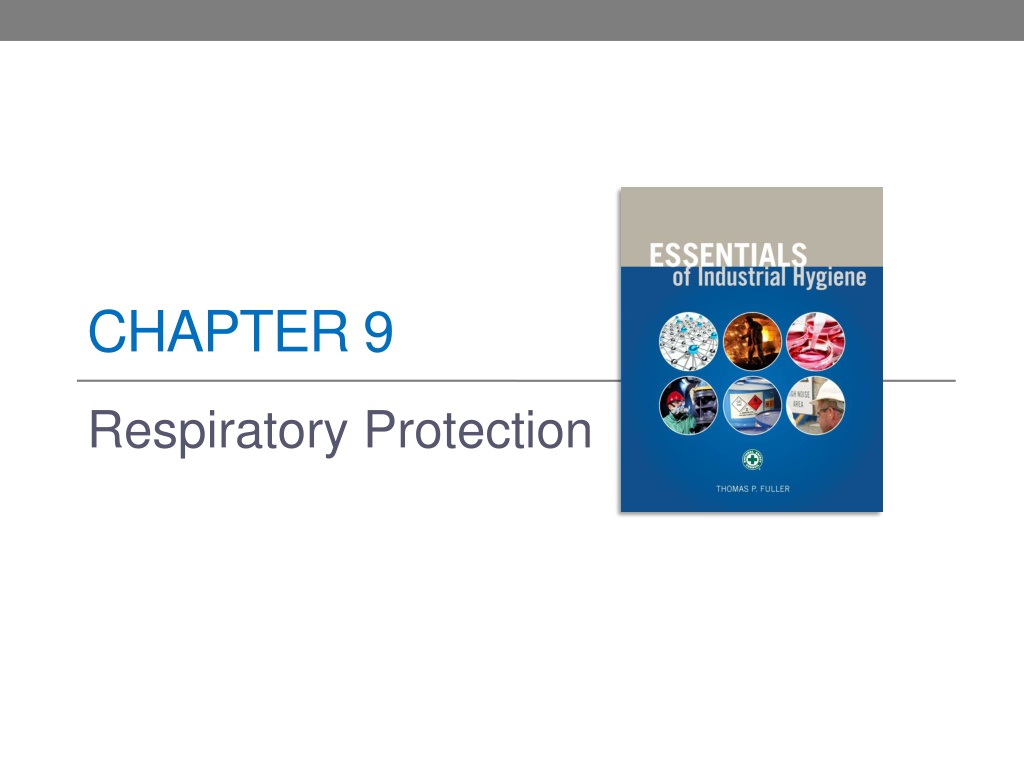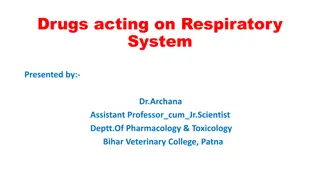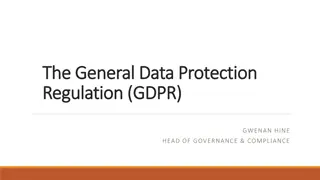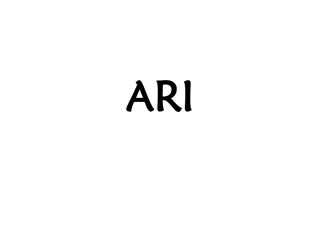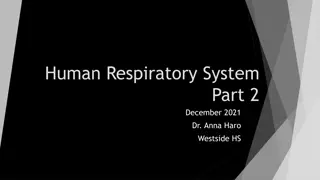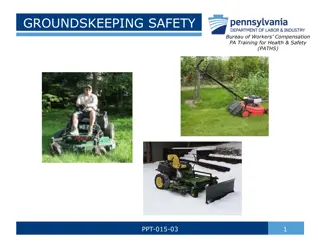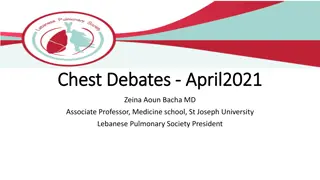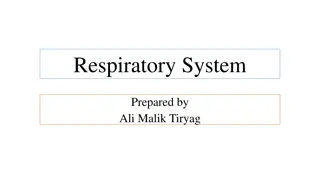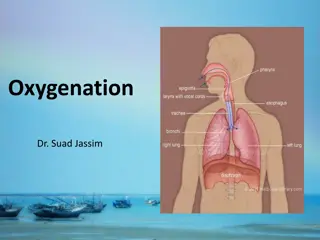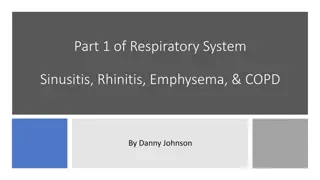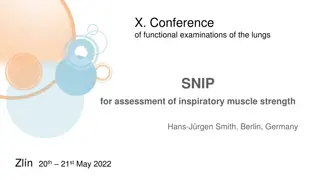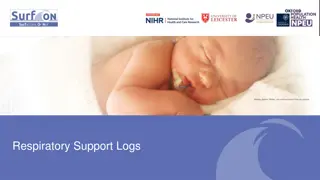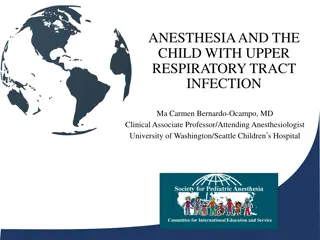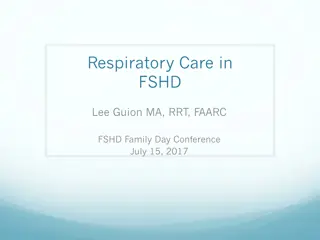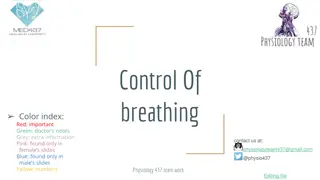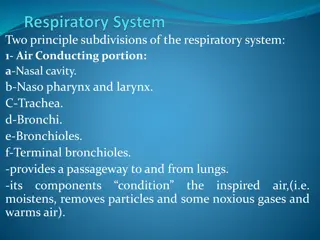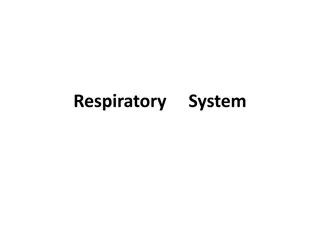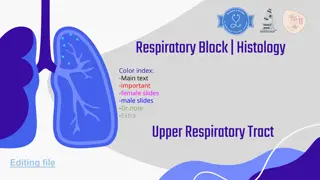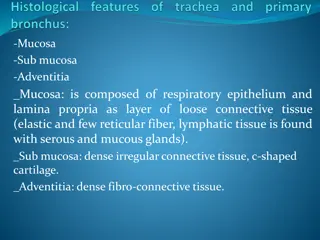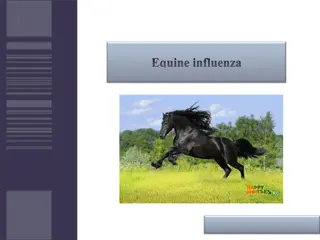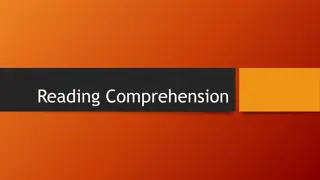Respiratory Protection Essentials
This chapter covers Occupational Safety and Health Administration (OSHA) requirements for respiratory protection, basic human lung anatomy and function, medical clearance prior to respirator use, respirator types, fit-testing, and written program elements. Visual aids illustrate respiratory system processes and different filter types like N-Series and R-Series.
Download Presentation

Please find below an Image/Link to download the presentation.
The content on the website is provided AS IS for your information and personal use only. It may not be sold, licensed, or shared on other websites without obtaining consent from the author. Download presentation by click this link. If you encounter any issues during the download, it is possible that the publisher has removed the file from their server.
E N D
Presentation Transcript
CHAPTER 9 Respiratory Protection
Learning Objectives List Occupational Safety and Health Administration (OSHA) requirements for respiratory protection. Describe basic human anatomy and function of the lungs. Outline the requirements for medical clearance needed prior to wearing a respirator. Understand how respirators work and the different types available. Review the respirator fit-testing purpose and process.
OSHA 29 CFR 1910.134 Respiratory Protection Used in general industry When engineering controls are not feasible, employers must provide appropriate PPE.
Written Programs Must include: procedures for selecting respirators medical evaluation of employees using respirators fit-testing of respirators procedures for proper use of respirators procedures for cleaning and disinfecting respirators procedures for air quality in using air-supplied respirators training and training procedures evaluating the effectiveness of the respiratory protection program procedures where respirators are not required
Respiratory System Source: Blausen.com staff. Blausen gallery 2014. Wikiversity Journal of Medicine.
N-Series Filters N95 particulate filter at least 95% efficient N99 (previously low efficiency) particulate filter at least 99% efficient N100 (previously high efficiency) particulate filter at least 99.97% efficient
R-Series Filters R95 particulate filter at least 95% efficient R99 (previously low efficiency) particulate filter at least 99% efficient R100 (previously high efficiency) particulate filter at least 99.97% efficient
P-Series Filters P95 particulate filter at least 95% efficient P99 (previously low efficiency) particulate filter at least 99% efficient P100 (previously high efficiency) particulate filter at least 99.97% efficient
Vapor and Gas Removal Mechanisms Adsorption Absorption Catalyst
Air-Purifying Respirators Source: Used with permission from MSA. Source: Used with permission from MSA.
Air-Purifying Respirators (cont.) Disposable air-purifying respirators Reusable quarter-face, half-face, or full-face Respirators Mouthpiece respirator
Air-Purifying Respirators (Cont.) Powered air-purifying respirator (PAPR) Source: Used with permission from MSA.
Atmosphere-Supplying Respirators Self-contained breathing apparatus Air-line respirators Source: Used with permission from MSA.
Medical Evaluation Evaluations determine limitations of respirator use by the worker additional or follow-up medical evaluations that the worker can use the type of respirator being provided by the employer that the employer must provide an additional type of respirator whether the employee is medically fit to use a respirator
Fit-Testing Procedures Qualitative fit-testing Source: Used with permission from MSA. Source: Used with permission from MSA.
Fit-Testing Procedures (cont.) Quantitative fit-testing Source: Used with permission from MSA.
Fit-Testing Procedures (cont.) Normal breathing Deep breathing Turning head side to side Moving head up and down Talking (reciting the rainbow passage) Grimace (making faces) Bending over or jogging in place Normal breathing
